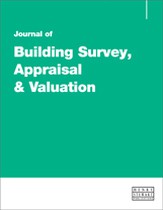Impact protection using novel fibre reinforced concrete
Abstract
The research described in this paper identifies how the use of three-dimensional (3D) unwelded fibre reinforcement can provide protection against back-face spalling in the case of damage caused by impact, and contributes to understanding how such material specification can carry significant long-term benefits. When subjected to ballistic impact or explosion, reinforced concrete suffers back-face spalling caused by compressive stress waves, resulting in projectiles that can cause injury and collateral damage. This conceptual study seeks to reduce concrete projectiles and subsequent damage using 3D unwelded fibre-reinforcement. Conventional two-dimensional (2D) straight fibres rely on orientation and positioning for effective bridging of rupture planes, whereas 3D fibres benefit from inherent superiority of their orientation across a rupture plane. Twenty-five kilograms of 3D unwelded fibres (3DUWBL) and 2D fibres per m3 of concrete were used in the mix designs. Samples were tested for compressive strength, fibre pull-out, three-point and four-point flexural testing and ballistic impact. There was significant improvement in toughness and post-fracture control within the 3DUWBL specimens. The 3DUWBL fibres exceeded EN 14889 standards, outperforming the 2D fibre specimens, and controlled back-face spalling and reduced airborne projectiles in comparison to the 2D fibres. The study is limited to demonstrating proof of concept. The implication of these results will inform future research studies in this area. The results identify a current gap in research associated with 3D unwelded fibre use and the reduction of back-face spalling. 3D fibres overcome the significant failings of even dispersion and bond pull-out strength ordinarily associated with 2D fibres. This is due to the x y z orientation and omission of the welded connection. The implications are a reduction in manufacturing time and costs, making 3DUWBL fibres a more viable industry application. This research shows that 3D unwelded fibre reinforcement provides good resistance to back-face spalling of concrete elements when they are subjected to ballistic stresses. Such fibres are not currently commercially available, but they would be cheaper to produce, and their novel fibre shape provides enhanced post-crack toughness performance with the addition of lower variability, providing a lower-risk form of crack control.
The full article is available to subscribers to the journal.
Author's Biography
Alan Richardson served for 26 years as Managing Director of the commercial construction firm Elliott Richardson Ltd, which earned its title of the most successful director/company in the UK operating BEC Guarantee schemes. Following this, he became a Reader/Associate Professor specialising in aspects of fibre concrete; he has published over 120 academic papers in this field, a large proportion of which were Q1 rated.
Michelle Littlemore is an Assistant Professor in Project Management in the Department of Architecture and the Built Environment, Northumbria University. She has a wealth of industry experience having worked as a Commercial Project Manager for Saint Gobain on a number of high-profile commercial projects across the UK. As an academic her research spans many areas of construction, from building information modelling (BIM) to concrete. More recently her attention has turned to pedagogic research with a specific interest in experiential learning for construction and project management students.
Harry Toase is a Civil Engineer holding a master’s degree with first-class honours from Northumbria University, Newcastle. During his university years, he gained substantial field experience by working on the Crossrail project with Balfour Beatty and spending a year on the offshore works at Hinkley Point Nuclear Power Station. After obtaining his degree, he joined the High Speed 2 (HS2) railway project as a graduate and has since been promoted to a Section Engineer, where he is honing his skills and making a meaningful impact in his field.
Citation
Richardson, Alan, Littlemore, Michelle and Toase, Harry (2024, June 1). Impact protection using novel fibre reinforced concrete. In the Journal of Building Survey, Appraisal & Valuation, Volume 13, Issue 1. https://doi.org/10.69554/XZVV3091.Publications LLP
